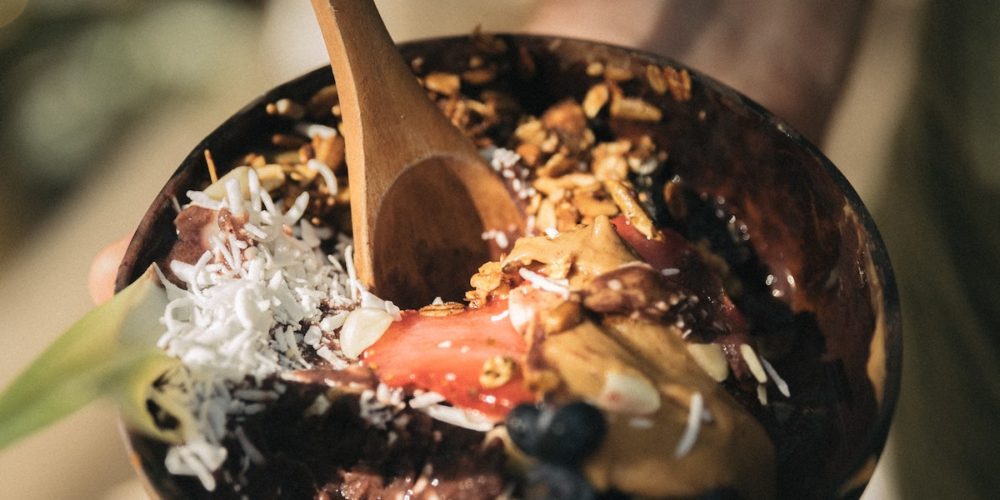Anti Inflammatory Diet, Gut Health ·
A Dietitian’s Guide to Nutrition for Celiac Disease
If you’ve been diagnosed with celiac disease, you probably have a lot of questions about what you can eat now. Read this overview of nutrition for celiac disease, from a registered dietitian – it’s packed with advice on how to follow a gluten free diet so you can get started on a healing path right away.
After over a decade in practice as a registered dietitian, I know that getting diagnosed with chronic disease takes some time to wrap your head around. And when it’s a disease that requires you to really change how you eat, such as celiac disease, it can be an even bigger adjustment.
So let’s start by taking a deep breath. I’ve got you. And you will figure this out, with help from your care team.
If your doc hasn’t referred you to a dietitian yet, I highly recommend you book in for some one-on-one time because you probably have a lot of questions that are better answered by a legit professional – not Dr Google.
However, while you’re waiting to see a dietitian, I wanted to offer this beginner’s guide to nutrition for celiac disease so you can start learning now and feel more confident in moving forward.
- What is celiac disease?
- What is gluten?
- How is celiac disease diagnosed?
- Nutrition for Celiac Disease
- Nutritional deficiencies in celiac disease
- Celiac disease: what to eat
- Gluten Free Diet Food List
- Can you eat oats if you’re celiac?
- Celiac disease: foods to avoid
- How to avoid cross-contamination
What is celiac disease?
Celiac disease is NOT a gluten allergy or simple food intolerance. It is an auto-immune disease that, once activated in the body, is triggered by the presence of gluten in the diet. Even the tiniest crumb of gluten – from putting a piece of gluten free toast in the family toaster for example – is enough to maintain the autoimmune cascade so for someone with celiac disease, a very strict elimination of gluten is necessary.
Celiac disease occurs in roughly 1% of the population and appears to be on the rise, as are other autoimmune-related diseases such as lupus and ulcerative colitis.
What is gluten?
Gluten is a protein naturally found in wheat, barley and rye and all of the grains + grain products related to them, such as couscous, spelt or pasta.
Gluten is what gives doughs their elasticity, and allows bread to rise. Gluten is also a valuable plant-based protein, usually called seitan on ingredients lists of plant-based meat alternatives.
While eating gluten is harmful to those with celiac disease, gluten does NOT cause inflammation in people with healthy guts – despite what the internet says.
How is celiac disease diagnosed?
Celiac disease can result in gut-related and non-gut-related symptoms and signs, including:
- Abdominal pain, diarrhea, IBS-like symptoms, constipation, vomiting
- Unexplained weight loss, fatigue, depression, irritability, or rashes
- Iron or folate deficiency anemia, arthritis, osteopenia, infertility
Celiac disease can be screened for using a simple blood test called the IgA anti-tissue transglutaminase (TTG). Upon a positive result, you should be referred to a gastroenterologist for a biopsy to examine the gut tissues, which is still considered the gold standard of diagnosis although some GPs are diagnosing celiac disease from the blood test which is discouraged by the Canadian Celiac Association.
Nutrition for Celiac Disease
Celiac disease is the only auto-immune disease that is considered 100% treated by nutrition. When you eliminate gluten strictly from your diet, your antibodies come down and the autoimmune processes are expected to shut off (antibodies can stay high for some, it’s called refractory celiac disease).
Of course, eliminating gluten strictly usually means a big change in how we eat. So it’s important to know that adopting a strict gluten free diet will take time. There will be accidental gluten ingestion. But you will get there!
Set aside more time for grocery shopping for the next little while as you’ll need to do some sleuthing to read ingredients labels and find gluten free versions of your favourite foods. You’ll also need to makeover your favourite recipes! Happily, most of the plant-based recipes on this blog are gluten free and 100% of the recipes in Eat More Plant Cookbook are gluten free too.
While this is a plant-based nutrition blog, I’m writing this post for all eaters. If you’re already eating a plant-based or vegan diet, I have a special post for you on going gluten free while maintaining your vegan diet.
Nutritional deficiencies in celiac disease
Aside from switching to a gluten free diet, it’s important to note that certain nutrient deficiencies are common in celiac disease as intestinal damage causes nutrient malabsorption. Iron is a common deficiency; you may have been diagnosed with celiac disease because your doc was investigating the cause of your anemia.
Other nutrient deficiencies that are common in celiac disease are B12, zinc, calcium, and vitamin D.
In addition to the malabsorption, which should heal as your gut does, eating a gluten free diet – particularly one that relies heavily on packaged gluten free foods – may lead to a decreased intake of certain nutrients such as iron, B vitamins, calcium, magnesium, zinc and fibre. So you’ll want to ensure you eat more iron rich foods as well as foods rich in fibre, B vitamins and minerals like gluten free whole grains, legumes, nuts and seeds.
Fibre is a biggie, as fibre is critical for supporting a healthy gut microbiome that helps to keep inflammation at bay. However, enjoying more whole plant foods such as fruits, vegetables, gluten free whole grains, legumes, nuts and seeds will help you achieve a nutrient-dense diet that helps you feel your best.
Celiac disease: what to eat
If this was 20 years ago, my advice would look really different. There were very few options for those on a gluten free diet. Now, you’re spoilt for choice! Happily, pretty much everything you want to eat has a gluten free swap. So it’s really about finding the right product that you enjoy.
As I mentioned above, I absolutely encourage you to make whole plant foods the foundation of your gluten free diet. Then, add in the pastas, breads, and snacks you enjoy most. This eating approach will also help you avoid constipation due to a low fibre diet.
Gluten Free Diet Food List
For all packaged foods, ensure that you read the ingredients panel to ensure that there are no gluten-containing ingredients or allergen warnings about wheat or gluten. Some manufacturers may co-pack with gluten containing ingredients.
- Whole fruits and vegetables
- Canned and dried legumes
- Whole nuts and seeds such as flax seeds or cashews
- Gluten free grains + flours: millet, quinoa, buckwheat, sorghum, rice, corn, amaranth, arrowroot, tapioca, potato
- Gluten free breads made from gluten free flours such as rice, potato and millet
- Gluten free pastas made from chickpea, lentil, rice, corn
- Gluten free cereals, crackers and snack foods
- Certified gluten free oats and oat products*
- Pure oils and fats such as olive oil, avocado oil or plant-based butters
- Pure herbs and spices such as cumin, turmeric or dried oregano
- Gluten free condiments and sauces
- plain meats and seafood (if you eat them!)
- plain dairy milk and GF plant-based milk alternatives (most are!)
Hot topic: can you eat oats if you’re celiac?
Oats can cause some confusion to those diagnosed with celiac disease. Commercially available oats contain gluten – but not because gluten occurs naturally in oats. Instead, it’s because oats are cross-contaminated with gluten along every step of their life cycle from seed to packaging.
Since the 2000’s, certified gluten free oats have been available which is incredible as it greatly increases the variety of grains in the gluten free diet. However, it is still recommended that folks avoid even GF oats until their antibodies come down post-diagnosis. Why? It is thought that a very small percentage of folks may cross-react to a protein in oats called avenin. It’s worth noting that adding oats into a GF diet also means adding fibre, so an increase in gas or bloating is normal for a few days. Start small (maybe ¼ cup dry oats) and add more as tolerated.
Celiac disease: foods to avoid
A gluten free diet is FAR from restrictive these days…swaps abound! However, you do need to know where gluten lurks. Cuz it’s a tricky little fox.
- All products made from wheat, barley and rye including cereals, breads, baked goods, crackers, snack bars
- Wheat-related grains
- Durum, einkorn, emmer, farro, graham, khorasan/kamut, semolina, spelt, triticale
- Many sauces and condiments (wheat is used as a thickening agent) such as BBQ sauces, cream sauces, salad dressings and teriyaki sauce
- Standard soy sauce and tamari (GF versions available!)
- Trail mixes and dried fruit (wheat flour used to reduce stickiness)
- Burgers, hot dogs and sausages (animal and plant-based)
- Breaded + coated items such as tempura, nuggets etc
- Flavoured ice creams, chips and candy bars
- Beer and malt beverages
- Luncheon meats (animal + plant-based)
- Seasoning packets and bouillon
You’ll also want to watch your lip balms and lipsticks (we eat a lot of lipstick!) as well as talk to your pharmacist about any medications + supplements you’re on in case they contain gluten.
It’s also worth noting here that the intestinal damage in active celiac disease can decrease your ability to digest lactose. It may improve as your gut heals but some do find that lactose intolerance persists post-healing.
I’m working on a future post about vitamins + supplements for celiacs so stay tuned, but for now let me say that while a lactase pill will support you if you want to consume lactose…DO NOT buy gluten enzyme pills thinking they will allow you to eat gluten without risk. Nope, do not pass go!
How to avoid cross-contamination
Celiac disease means being really strict about avoiding cross-contamination.
It’s a bummer, but it’s also a fact.
That fave bakery of yours that makes a ‘gluten friendly’ croissant might not be such a good idea if it’s not made after proper cleaning protocols as wheat flour can hang in the air and cross-contaminate the gluten friendly foods.
If you have non-celiac gluten sensitivity, you may need a gluten free diet but not need to be as strict in the cross-contamination department.
Here are some tips + common scenarios to help you avoid accidental glutening.
- If buying gluten free snacks or baked goods from a standard cafe, ask if they make them themselves or if they’re purchased from a GF facility. If they make them, they should make gluten free items first before their gluten containing products after a thorough cleaning protocol. In addition, gluten free items should be wrapped in plastic or kept in their own case to avoid cross contamination.
- Avoid anything in bulk bins or packaged ‘bulk’ tubs unless they are explicitly labelled as gluten free. Ditto for deli items.
- Always tell your server at a restaurant that you have celiac disease so gluten free is not a ‘preference’ it’s an ‘allergy’ – this is incorrect but common language at restaurants.
- Do not get deep-fried foods such as french fries unless they are fried in a separate fryer from breaded items
- If your whole household is not going gluten free, get a separate toaster, cutting board and nonstick pan for yourself as well as any other kitchen item that is porous and hard to fully clean. Keep them marked (try nail polish) and separate them in a cupboard.
- Get separate condiments such as butter dishes, jam or peanut butter as it’s common to re-dip your knife after spreading.
- Keep gluten free foods in a separate cupboard from gluten containing items.
- Even naturally gluten free foods can be cross-contaminated in processing. So be sure that your chickpea or rice flour has a gluten free label on it.
Have a question about nutrition for celiac disease or a gluten free diet? Anything I missed? Feel free to leave it in the comments!
Share this post
Posted By: Desiree Nielsen · In: Anti Inflammatory Diet, Gut Health
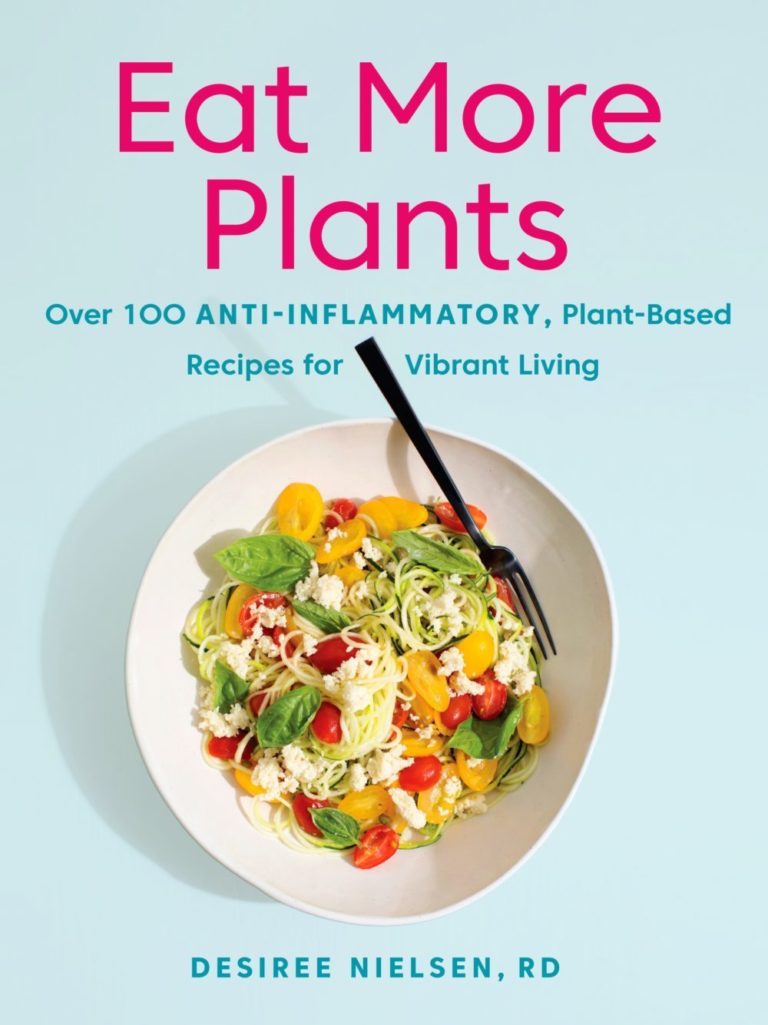
Revolutionize your approach to a healthy anti-inflammatory diet with the power of plant-based foods.
Order Now
You’ll Also Love
-
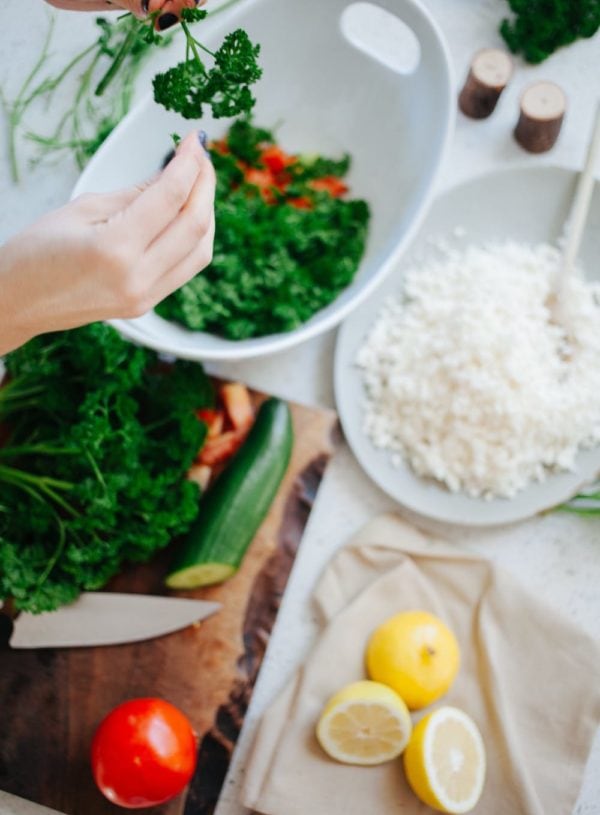 How to Make Your Gluten Free Diet Healthier
How to Make Your Gluten Free Diet Healthier -
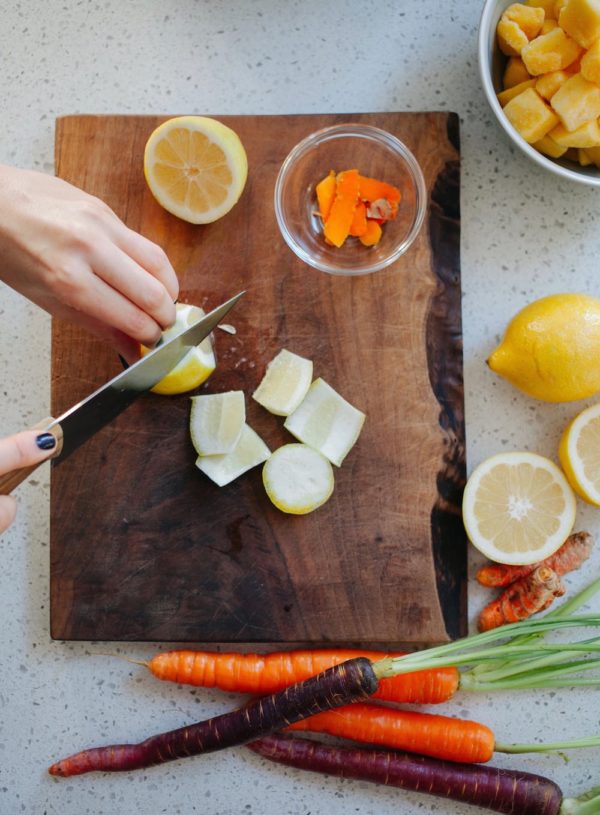 This One's for the Fellas: Foods You Need to Eat for Better Health
This One's for the Fellas: Foods You Need to Eat for Better Health -
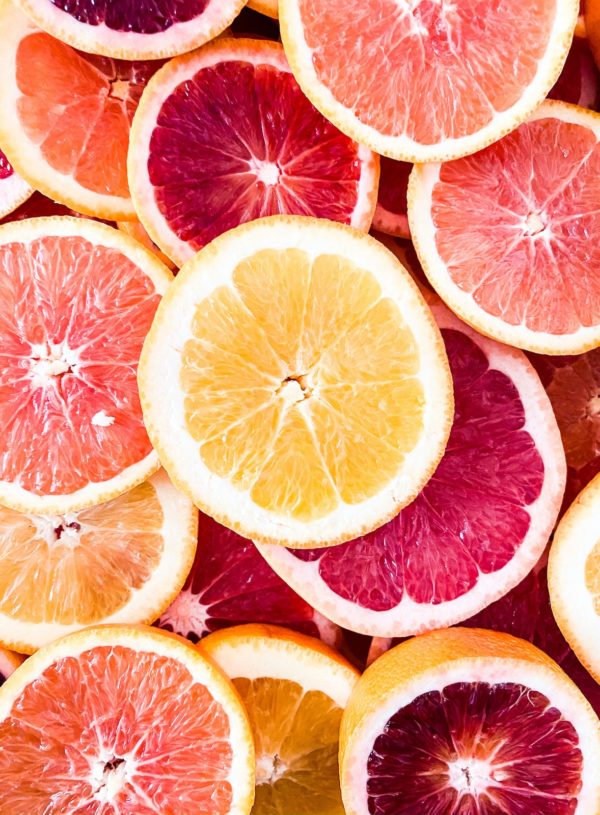 What’s the best diet for hypothyroidism?
What’s the best diet for hypothyroidism?
Comments
Parinitha Bhargav says
A very helpful post to educate one about the nutrition for celiac disease. Thank you for sharing.
Reply
Leave a Reply Cancel reply
Your email address will not be published. Required fields are marked *
Comment
Recipe Rating Recipe Rating
Name *
Email *
Website
Save my name, email, and website in this browser for the next time I comment.
Notify me if Desiree replies to my comment


